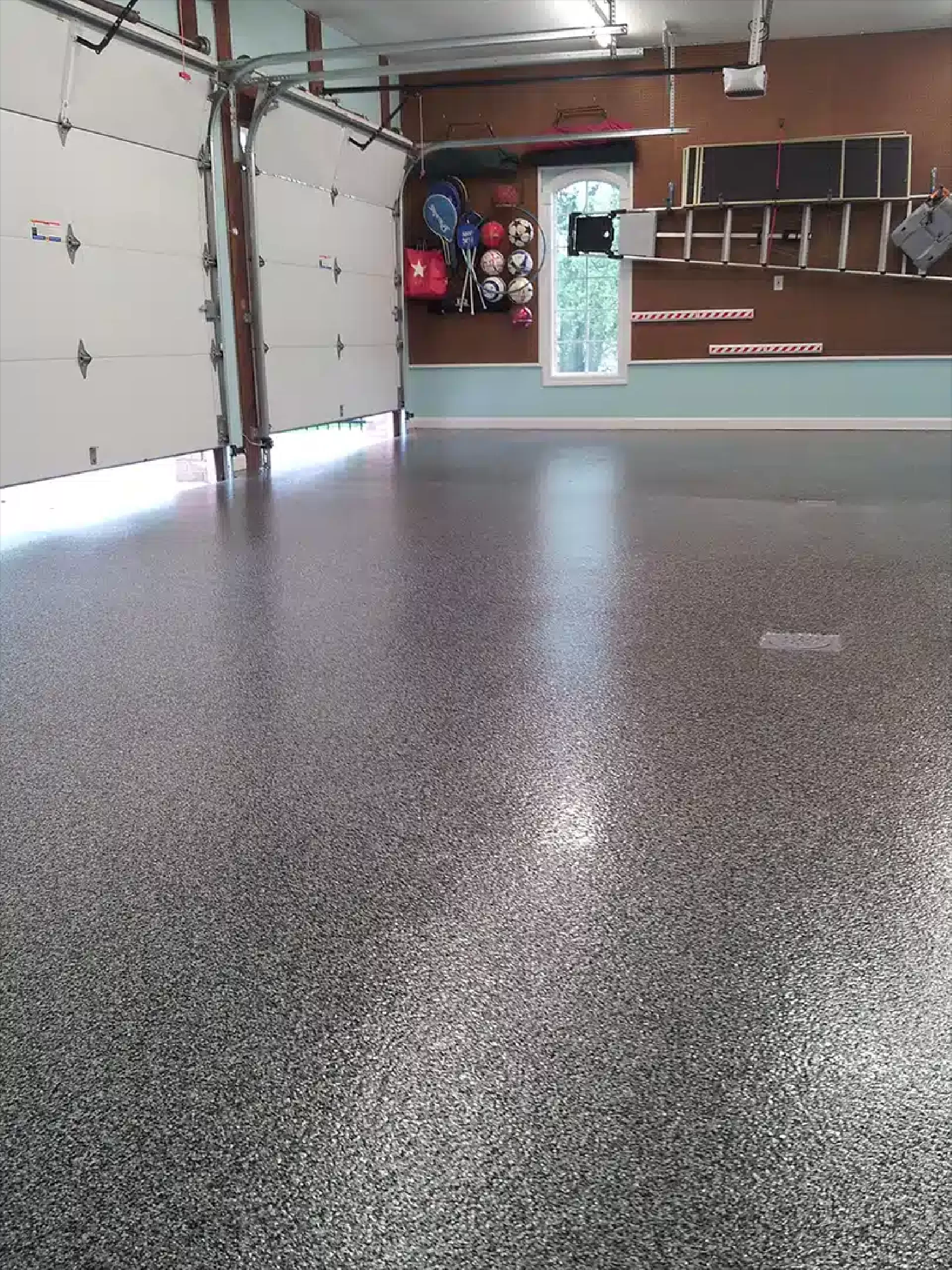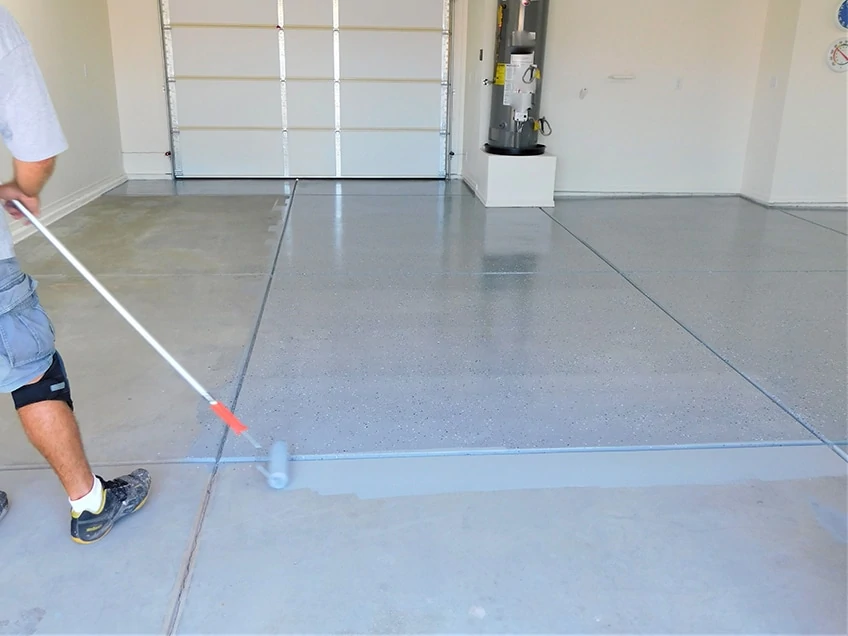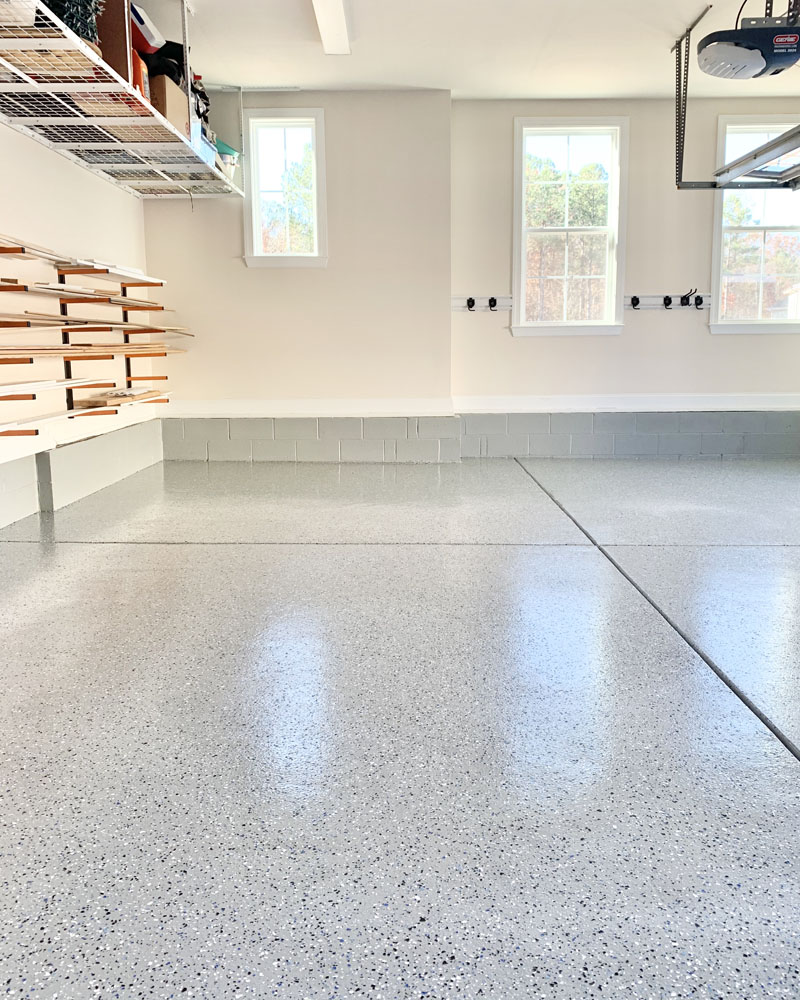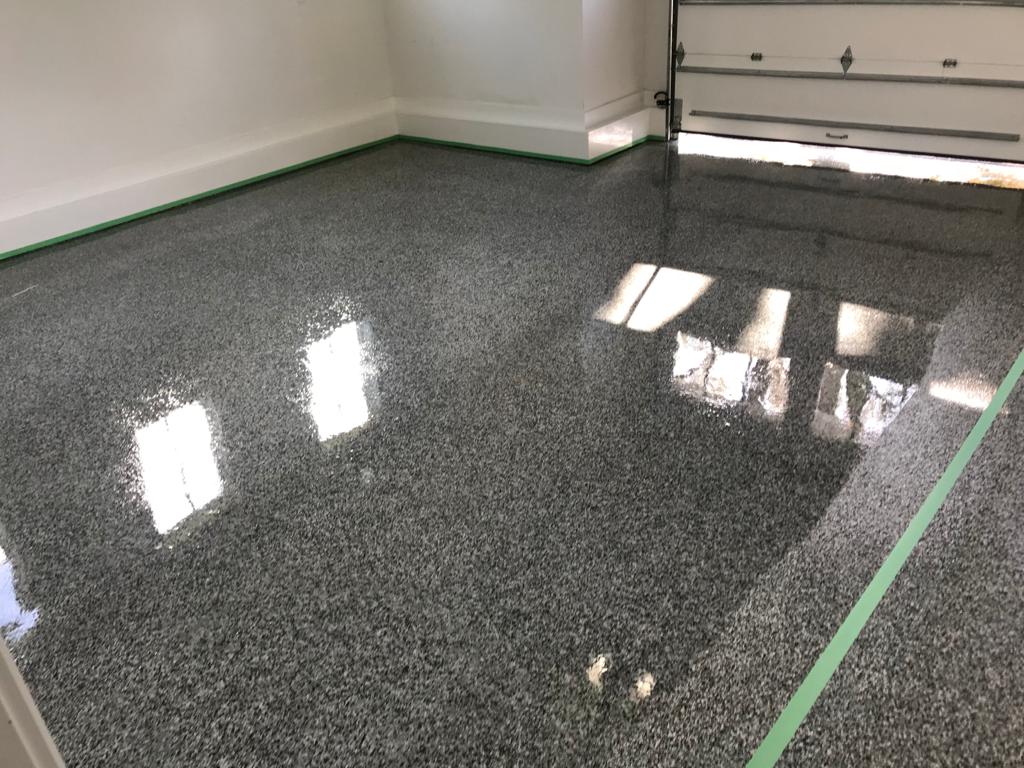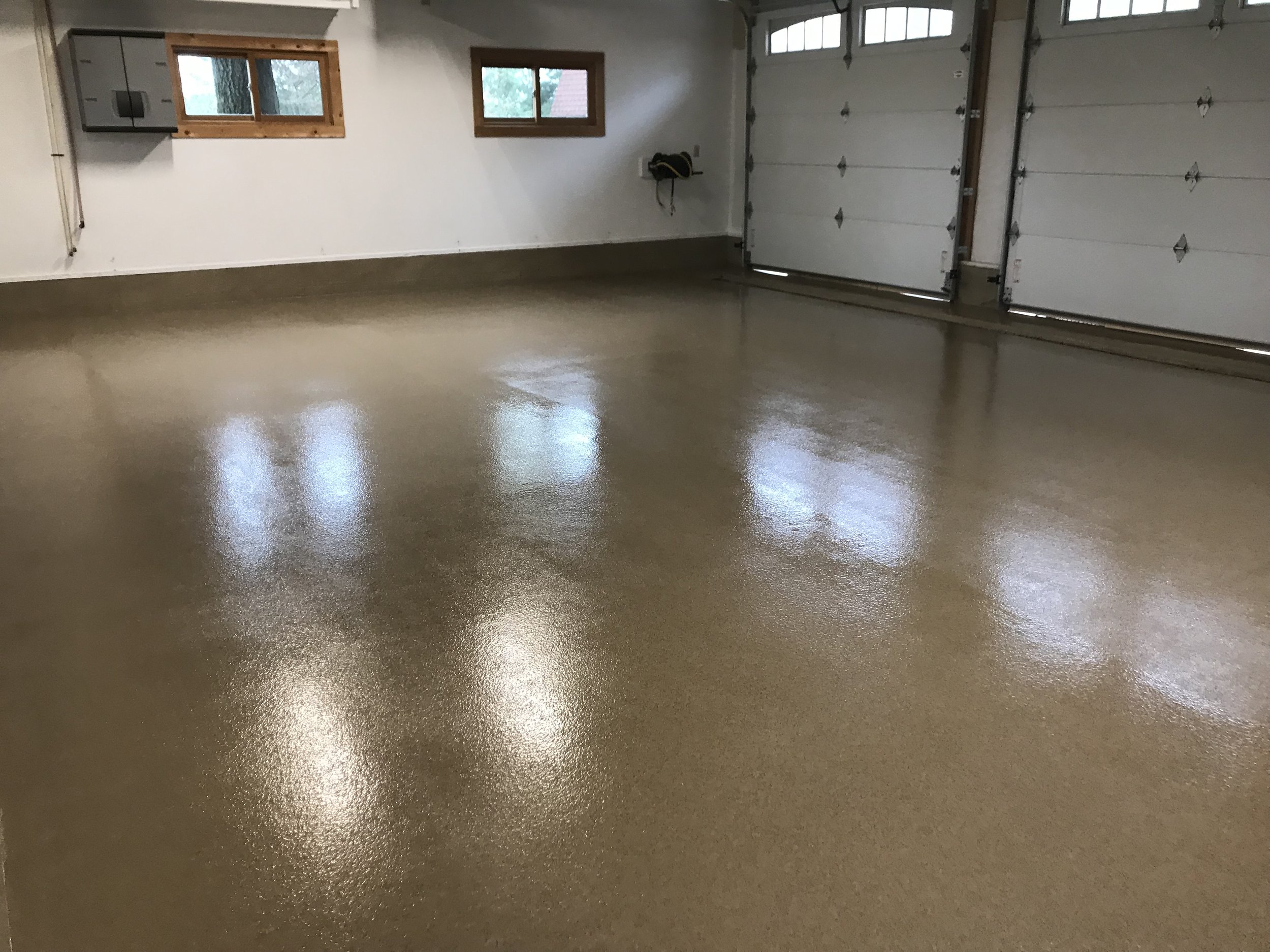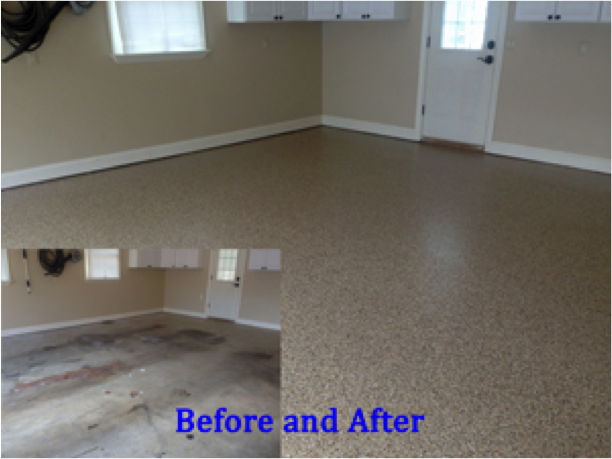Essential Steps Before Painting Over Epoxy Garage Floor
A freshly painted epoxy garage floor not only enhances the overall aesthetics of your garage but also provides long-lasting protection against stains and damage. However, before diving into the painting process, there are a few essential steps you need to take to ensure a successful and durable finish. We will guide you through the necessary preparations before painting over your epoxy garage floor.
- Clean and Remove Debris: The first step in preparing your epoxy garage floor for painting is to thoroughly clean the surface and remove any dirt, dust, or debris. Sweep or vacuum the floor to get rid of loose particles. Use a mild detergent and warm water to mop the floor and remove any stubborn stains or spills. Rinse the floor thoroughly and allow it to dry completely before moving on to the next step.
- Repair Any Damaged Areas: Inspect your garage floor for any cracks, chips, or other damage. It’s crucial to repair these areas before painting to ensure a smooth and even finish. Use a suitable epoxy patching compound or filler to fill in any cracks or holes. Follow the manufacturer’s instructions for application and drying times. Once the repairs are complete, sand the patched areas to create a level surface.
- Etch the Surface: To promote better adhesion between the existing epoxy coating and the new paint, it’s essential to etch the surface. Etching creates a slightly rough texture that allows the paint to bond securely. Use an etching solution or a muriatic acid solution (follow proper safety precautions and instructions) to etch the floor. Apply the solution evenly with a mop or brush and allow it to sit for the recommended time. Rinse the floor thoroughly with water to neutralize the acid and remove any residue.
- Test for Moisture: Before painting, it’s crucial to test the moisture levels of your garage floor. High moisture levels can affect the paint’s adhesion and cause it to peel or bubble. Use a moisture meter to check the moisture content in various areas of the floor. If the readings are above the recommended levels, consider using a moisture barrier or consult a professional for further guidance.
- Sand the Surface: To improve the paint’s bond with the epoxy floor, lightly sand the entire surface. Use a floor sander or sanding block with medium-grit sandpaper. Sanding helps remove any remaining gloss or imperfections and creates a rougher surface for better paint adhesion. After sanding, thoroughly clean the floor to remove any dust or debris.

Factors to Consider for a Successful Garage Floor Paint Job
Selecting the right paint for your garage floor is essential to achieve a successful and long-lasting finish. With numerous options available in the market, it can be overwhelming to make the right choice. We will discuss the factors you should consider when choosing paint for your garage floor.
Durability: One of the most crucial factors to consider when selecting garage floor paint is its durability. Your garage floor is subjected to heavy foot traffic, vehicle movement, and potential spills, so the paint needs to be able to withstand these conditions. Look for epoxy-based or polyurethane-based paints that are specifically designed for garage floors. These types of paints provide excellent durability and resistance to chemicals, stains, and abrasion.
Adhesion: Ensure that the paint you choose has excellent adhesion properties. It should bond securely to the epoxy coating or concrete surface to prevent peeling or flaking over time. Look for paints that specifically mention high adhesion or bonding capabilities. Read customer reviews and testimonials to get an idea of how well the paint adheres to garage floors.
Slip Resistance: Safety should be a priority when selecting garage floor paint. Consider paints that offer slip-resistant properties, especially if your garage floor is prone to getting wet. Look for paints that have a textured or non-slip finish to provide better traction and reduce the risk of accidents.
UV Resistance: If your garage has windows or receives a lot of sunlight, consider a paint that offers UV resistance. UV rays can cause paint to fade or deteriorate over time. Look for paints that are specifically formulated to resist yellowing or fading when exposed to sunlight. This will help maintain the appearance and longevity of your garage floor paint.
Color and Finish: While functionality is essential, aesthetics also play a role in choosing the right paint for your garage floor. Decide on a color that complements your garage’s overall look and matches your personal preferences. Additionally, consider the finish you desire, whether it’s glossy or matte. Keep in mind that glossy finishes tend to show more imperfections, while matte finishes can help hide flaws.
Surface Preparation Techniques: Ensuring Proper Adhesion for Long-lasting Results
Proper surface preparation is crucial for ensuring that your garage floor paint adheres well and provides long-lasting results. We will discuss some essential surface preparation techniques that will help you achieve proper adhesion and extend the lifespan of your newly painted epoxy garage floor.
Thorough Cleaning: Before starting any surface preparation, it’s essential to thoroughly clean your garage floor. Sweep or vacuum the floor to remove loose debris. Use a mild detergent and warm water to mop the floor and remove any dirt, grease, or stains. Pay extra attention to areas that are prone to oil or chemical spills. Rinse the floor thoroughly and allow it to dry completely.
Dealing with Oil Stains: Oil stains can be particularly challenging to remove and can interfere with the paint’s adhesion. Use a degreaser specifically designed for garage floors to treat oil stains. Apply the degreaser on the stained areas and scrub with a stiff brush. Rinse the floor thoroughly to remove any residue. If the stains persist, consider using an oil stain primer before applying the paint.
Repairing Cracks and Holes: Inspect your garage floor for any cracks or holes and repair them before painting. Use a suitable epoxy patching compound or filler to fill in the cracks and holes. Follow the manufacturer’s instructions for application and drying times. Once the repairs are complete, sand the patched areas to create a smooth and level surface.
Etching the Floor: Etching the floor is an important step to ensure proper adhesion between the existing epoxy coating and the new paint. Etching creates a slightly rough texture that allows the paint to bond securely. Use an etching solution or a muriatic acid solution (follow proper safety precautions and instructions) to etch the floor. Apply the solution evenly with a mop or brush and allow it to sit for the recommended time. Rinse the floor thoroughly with water to neutralize the acid and remove any residue.
Testing for Moisture: Moisture can negatively impact the paint’s adhesion and longevity. It’s essential to test the moisture levels of your garage floor before painting. Use a moisture meter to check the moisture content in various areas of the floor. If the readings are above the recommended levels, consider using a moisture barrier or consult a professional for further guidance.
Applying the Paint: Tips and Techniques for a Smooth and Even Garage Floor Finish
Once you have prepared your epoxy garage floor, it’s time to apply the paint. Proper application techniques are crucial to achieving a smooth and even finish that will enhance the appearance and durability of your garage floor. Below we provide you with some tips and techniques to help you achieve a professional-looking paint job.
Read the Instructions: Before starting the painting process, carefully read and follow the manufacturer’s instructions on the paint can. Different paints may have specific application requirements, such as temperature and humidity conditions, drying times, and mixing instructions. Following these instructions will ensure optimal results.
Use the Right Tools: Investing in high-quality tools and equipment will make the painting process easier and more efficient. Use a paint roller with a long handle and a medium-nap roller cover for even application. A paintbrush can be used for cutting in around edges and corners. Additionally, consider using a paint tray and a paint grid to ensure proper paint distribution on the roller.
Start with a Primer: Using a primer before applying the paint can improve adhesion and enhance the durability of the finish. Check if the paint you have chosen requires a primer, and if so, apply it according to the manufacturer’s instructions. Apply the primer evenly using a roller and brush, working in small sections.
Work in Small Sections: To ensure that the paint doesn’t dry too quickly or become uneven, work in small sections. Divide your garage floor into manageable areas and focus on one section at a time. Start at the farthest corner and work your way towards the exit, so you don’t accidentally paint yourself into a corner.
Apply Multiple Coats: Most garage floor paints require multiple coats for optimal coverage and durability. Follow the recommended drying times between coats and ensure that each coat is applied evenly and smoothly. Apply the paint in thin, even layers, using a roller or brush. Avoid applying too much paint at once, as it can lead to drips and unevenness.
Maintain a Wet Edge: When applying the paint, it’s important to maintain a wet edge to avoid visible brush or roller marks. Start each new stroke slightly overlapping the previous one to create a seamless finish. This technique helps blend the paint and prevents drying lines or streaks.
Allow Proper Drying Time: After applying the final coat of paint, allow it to dry completely before using the garage. Follow the manufacturer’s instructions for drying times, as they can vary depending on the paint type and environmental conditions. Avoid walking or driving on the freshly painted surface until it is fully cured.
Maintenance and Care: Extending the Lifespan of Your Newly Painted Epoxy Garage Floor
Once you have painted your epoxy garage floor, it’s important to implement proper maintenance and care to ensure the longevity and appearance of the paint. We will discuss essential maintenance and care tips to help you extend the lifespan of your newly painted epoxy garage floor.
Avoid Chemical Spills: To prevent damage to your garage floor paint, avoid spilling chemicals or harsh substances on the surface. Clean up any spills immediately to prevent them from seeping into the paint and causing stains or discoloration. Use a mild detergent and water to clean up any spills or stains, and avoid using abrasive cleaners or tools that can scratch the paint.
Regular Cleaning: Regular cleaning is essential to maintain the appearance of your painted epoxy garage floor. Sweep or vacuum the floor regularly to remove any dirt, dust, or debris. Use a mop or soft-bristle brush with a mild detergent and warm water to clean the surface. Avoid using harsh chemicals or abrasive cleaners that can damage or dull the paint.
Protect Against Heavy Objects: To prevent scratches or dents on your garage floor paint, use protective measures when moving or placing heavy objects. Place furniture pads or mats under heavy items to distribute the weight and minimize the impact on the paint. Avoid dragging or sliding heavy objects across the floor to prevent scratches.
Regular Inspections: Periodically inspect your garage floor for any signs of damage or wear. Look for any chips, cracks, or peeling in the paint. If you notice any areas of concern, address them promptly to prevent further damage. Touch up any small chips or repairs with matching paint to maintain a consistent appearance.
Avoid Excessive Moisture: Excessive moisture can cause damage to the paint and lead to peeling or bubbling. Avoid leaving wet items or allowing water to pool on the garage floor. If you live in a humid climate or have moisture issues in your garage, consider using a dehumidifier or applying a moisture barrier to prevent moisture from affecting the paint.
Limit Sun Exposure: Excessive exposure to sunlight can cause the paint to fade or discolor over time. If your garage has windows or receives a lot of sunlight, consider using blinds or curtains to limit the amount of direct sunlight on the floor. Additionally, using UV-resistant paint or applying a protective topcoat can help minimize the effects of sun exposure.
Periodic Maintenance: Over time, your painted epoxy garage floor may require some maintenance to keep it looking its best. Consider applying a fresh coat of paint or a protective topcoat every few years to rejuvenate the appearance and maintain the durability of the paint. Follow the manufacturer’s instructions for application and drying times.
Garage Flooring Ideas For Men – Paint, Tiles And Epoxy Coatings
Garage Floor Coating – Shoreline Painting
DIY vs. Professional Garage Floor Coatings u2014 Advanced Flooring Systems
5 Myths about Garage Floor Coatings
Related Posts:
- Epoxy Gloss Floor Paint
- Epoxy Concrete Floor Covering
- Thick Epoxy Floor Coating
- Epoxy Paint Floor Finish
- Epoxy Floor Coating For Basement
- White Metallic Epoxy Floor
- Clear Epoxy Shower Floor
- Office Epoxy Flooring
- Black Epoxy Floor Coating
- Epoxy Basement Floor DIY
